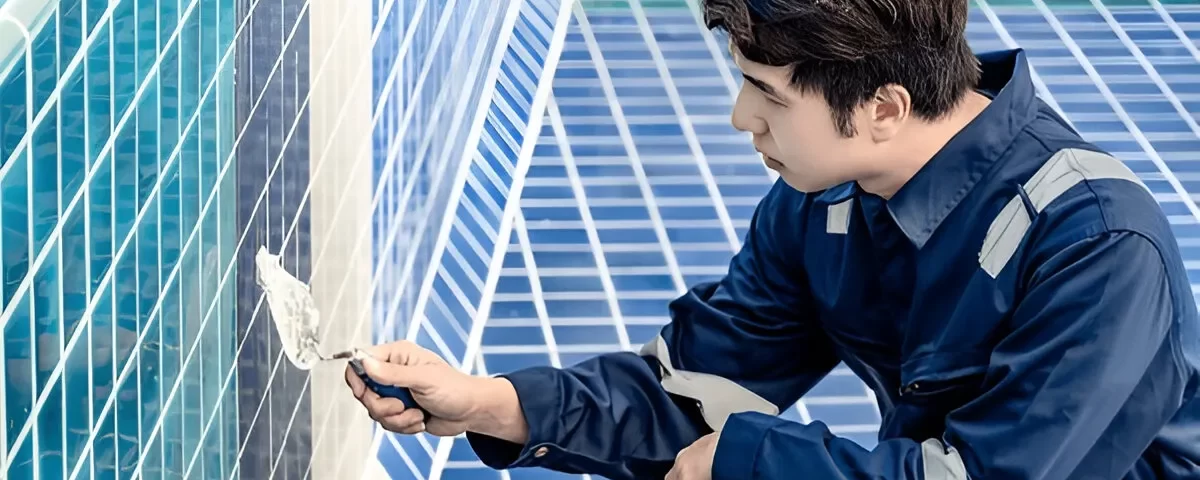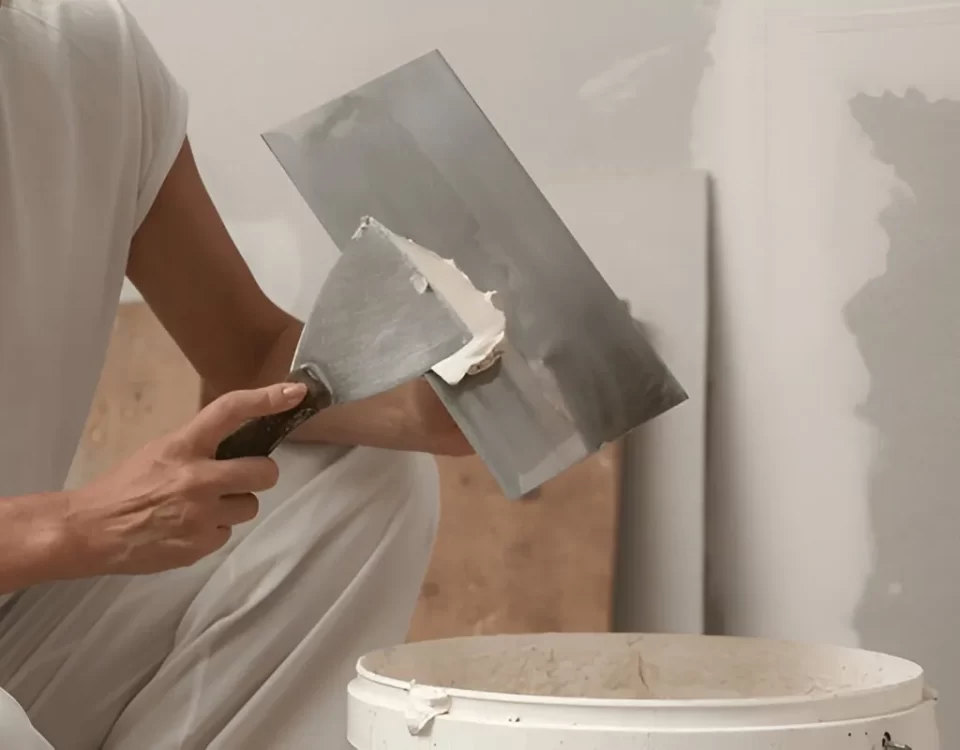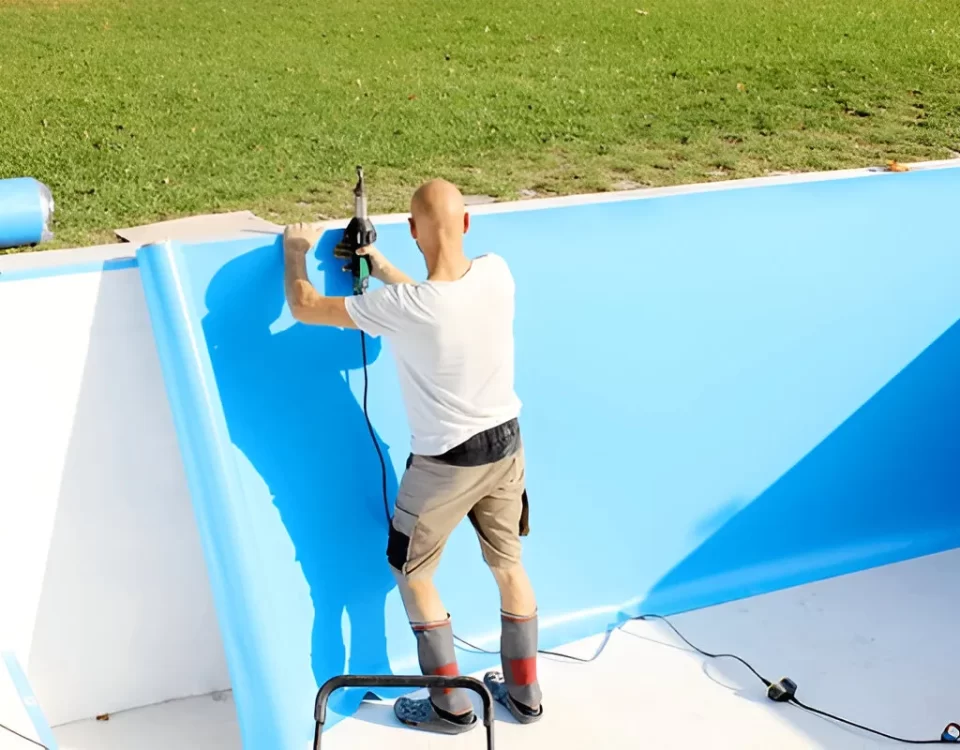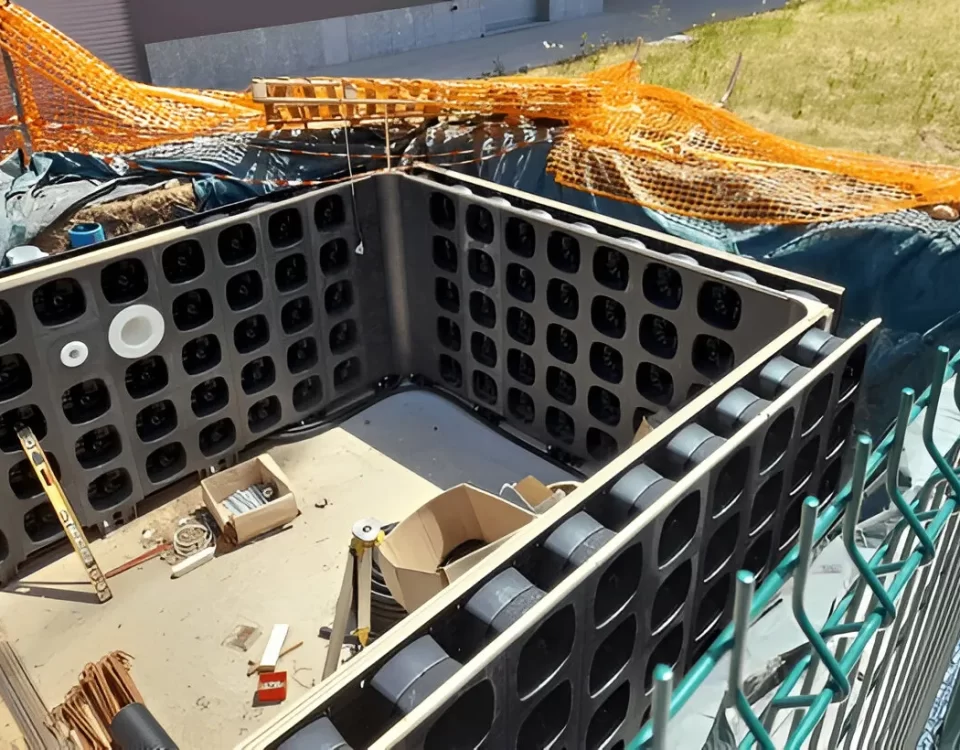Aquaguard: Your Ultimate Foundation Waterproofing Solution

Mighty Steel: Unveiling the Secrets of Reinforcement Bars
May 29, 2025
Unveiling the Ultimate Insulation Materials Showdown
May 29, 2025The Importance of Foundation Waterproofing
Waterproofing a foundation is a crucial aspect of home construction and maintenance that cannot be overlooked. Foundations are inherently vulnerable to moisture intrusion, which can lead to a myriad of problems. _Ignoring the necessity for proper waterproofing can have dire consequences_, significantly impacting both the safety and livability of a home.
Water Damage: A Silent Saboteur
The most immediate and tangible consequence of neglecting foundation waterproofing is water damage. When water infiltrates a foundation, it can erode the integrity of the materials used, leading to cracks and deterioration. _Over time, this not only compromises the structural stability of the home but also can result in costly repairs._ Homeowners often find themselves faced with hefty restoration expenses, not to mention the potential loss of property value due to visible damage.
Mold Growth: A Hidden Hazard
In addition to structural issues, unprotected foundations provide an ideal breeding ground for mold growth. When moisture seeps into basement areas, it creates the perfect environment for mold spores to thrive. _Mold can spread quickly, posing significant health risks to occupants_, especially those with respiratory conditions or weakened immune systems. The presence of mold not only creates a health hazard but also necessitates expensive remediation efforts that could easily have been avoided with proper waterproofing.
Structural Issues: The Domino Effect
Water infiltration can lead to a host of structural issues that extend beyond mere cosmetic damage. _Inadequate waterproofing can cause settling and shifting of the foundation_, leading to cracks in walls and misaligned doors and windows. These structural deficiencies can escalate, resulting in serious safety concerns and potentially making a home uninhabitable. Moreover, lending institutions are often wary of properties with known foundation issues, making it increasingly difficult for homeowners to sell or refinance.
Financial Implications: Long-Term Costs
The financial repercussions of failing to waterproof a foundation can be staggering. The table below illustrates potential costs associated with various foundation-related damages:
| Type of Damage | Potential Cost |
|---|---|
| Minor repairs (crack fillings) | $500 – $2,000 |
| Professional mold remediation | $1,500 – $6,000 |
| Foundation repair (underpinning) | $3,000 – $25,000 |
| Full basement waterproofing | $2,000 – $10,000 |
As shown, the costs associated with neglecting foundation waterproofing far exceed the investment required to properly protect a home from water intrusion. Making an upfront investment in waterproofing can prevent significant financial strain in the future.
Impact on Property Value
Lastly, the absence of effective waterproofing can severely devalue a property. Homes that exhibit signs of water damage or mold are often difficult to sell, as prospective buyers are generally wary of inheriting costly repairs. _In the competitive real estate market, a solid waterproofing system can become a selling point_, whereas a lack thereof may lead to diminished interest and lower offers. Thus, foundation waterproofing not only safeguards the structural integrity and health of a home but also serves as an essential strategy for maintaining property value.
Common Causes of Foundation Water Intrusion
Understanding the common causes of foundation water intrusion is essential for homeowners, particularly those with swimming pools. Water seepage can compromise the structural integrity of a foundation, leading to costly repairs and unsafe living conditions.
Poor Drainage
One of the primary culprits of foundation water intrusion is poor drainage. If the grading around a property directs water toward the foundation rather than away from it, this can create conditions ripe for water accumulation. Moreover, improperly functioning gutters and downspouts can exacerbate this problem. When rainwater is not diverted appropriately, it can pool around the foundation, leading to potential leaks and structural damage over time.
Hydrostatic Pressure
Another significant factor is hydrostatic pressure. As water accumulates in the soil surrounding a foundation, it exerts pressure against the walls. This pressure can push water through cracks and joints, especially in basements and crawl spaces. In areas with high water tables or during periods of heavy rainfall, hydrostatic pressure can become quite pronounced. This issue is particularly detrimental for homeowners with swimming pools, as the additional water adds to the existing pressure on the foundation.
Cracks in the Foundation
Cracks in the foundation are often a direct pathway for water intrusion. These fissures can occur due to various reasons, including soil settlement, thermal expansion, or even age-related wear. As small cracks develop, they can widen over time, allowing water to seep in more easily. It is important to regularly inspect your foundation for any signs of cracking, as addressing them promptly can prevent more significant water intrusion issues.
Soil Composition
The type of soil surrounding a foundation plays a critical role in water retention and drainage capabilities. Clay soil, for example, is notorious for retaining moisture, leading to increased hydrostatic pressure against the foundation. Conversely, sandy soil tends to drain more effectively but may not provide adequate support for the foundation. It is vital for homeowners to understand the soil composition of their property and how it affects water drainage and foundation health.
Improper Landscaping
Landscaping choices can significantly impact drainage patterns. Flower beds and shrubs placed too close to the foundation can trap moisture near critical structural areas. Moreover, decorative features like retaining walls, while aesthetically pleasing, can also redirect water toward the foundation rather than away from it. Implementing proper landscaping techniques, such as ensuring adequate grading and utilizing plants that require less water, can mitigate the risk of water intrusion.
Neglected Maintenance
Regular maintenance is key in preventing foundation water intrusion. Homeowners often overlook small issues that can escalate into larger problems. Regularly cleaning gutters, inspecting downspouts, and maintaining landscaping can help ensure that water flows away from the foundation. Additionally, routine checks for cracks and settling can allow for early intervention, safeguarding the integrity of the property. Ignoring maintenance can lead to severe and expensive consequences.
Types of Foundation Waterproofing Methods
When it comes to foundation waterproofing, several techniques stand out as effective methods for mitigating the risks associated with water infiltration. Understanding these methods is crucial not only for preserving the integrity of your foundation but also for maintaining a healthy pool environment. Below, we delve into the most popular foundation waterproofing methods, each with its unique advantages and applications.
Exterior Waterproofing Membranes
Exterior waterproofing membranes are among the most reliable solutions for preventing water penetration into a building’s foundation. Typically made from rubberized asphalt or thermoplastic polyolefin (TPO), these membranes are applied to the outer surface of the foundation walls. The key benefit of this method lies in its ability to create a barrier that resists water pressure from outside sources, effectively diverting moisture away before it can infiltrate the structure.
These membranes not only enhance waterproofing but can also contribute to energy efficiency. By insulating the foundation against external temperature fluctuations, they help regulate interior climate, which is particularly beneficial for properties with swimming pools, where humidity levels must be meticulously managed.
Interior Sealants
In contrast to exterior approaches, interior sealants provide a more accessible option for homeowners looking to protect their basements or crawl spaces from dampness. These sealants come in various formulations, including epoxy, polyurethane, and acrylic, and are designed to penetrate and seal cracks and porous surfaces within the foundation. When applied correctly, they form a waterproof barrier that not only halts water ingress but also enhances the structural stability of the foundation.
One of the advantages of utilizing interior sealants is the ease of application, making it a popular choice for DIY enthusiasts. However, it’s essential to recognize that while they can be effective for minor leaks and moisture issues, they may not suffice for serious water intrusion problems, which warrant more comprehensive exterior solutions.
French Drains
French drains represent an innovative drainage system designed to divert water away from the foundation area. This method involves the installation of a trench filled with gravel and a perforated pipe at the base, allowing excess ground and surface water to be redirected away from the foundation. As a passive solution, French drains function effectively in preventing the accumulation of water around foundation walls.
Ideal for properties with high groundwater levels, French drains not only reduce the risk of flooding but also alleviate soil pressure against foundation walls. A well-designed French drain can complement other waterproofing methods, providing a multi-layered approach to landscape and foundation protection.
Comparison of Foundation Waterproofing Methods
| Method | Advantages | Best Suitable For |
|---|---|---|
| Exterior Waterproofing Membranes | High durability, effective water pressure resistance | New constructions, high-water tables |
| Interior Sealants | Ease of application, cost-effective | Minor leaks, DIY projects |
| French Drains | Effective water diversion, reduces soil pressure | High groundwater areas, combined systems |
Incorporating multiple methods of foundation waterproofing can significantly enhance the longevity and resilience of your property. By strategically implementing external membranes, internal sealants, and effective drainage systems like French drains, you can create a formidable defense against water intrusion, ensuring that your swimming pool and surrounding landscape remain safe and inviting.
Professional vs. DIY Waterproofing
The decision to waterproof a foundation often presents a pivotal choice between employing the services of a professional waterproofing company and undertaking the project as a do-it-yourself (DIY) endeavor. Each option harbors its own unique benefits and drawbacks, thereby necessitating a careful evaluation for homeowners seeking to protect their property from water damage.
Advantages of Hiring a Professional
Engaging a professional waterproofing company offers a plethora of advantages. First and foremost, these specialists come equipped with extensive experience and expertise in identifying the root causes of water infiltration and applying effective solutions. Unlike the average homeowner, professionals possess a deep understanding of various waterproofing techniques, materials, and technologies, such as drainage systems and membrane applications.
Moreover, professional waterproofers often provide comprehensive warranties that safeguard the homeowner’s investment. This assurance of quality and durability can be invaluable, as it alleviates concerns regarding potential future water damage. Additionally, professionals possess access to advanced equipment that is typically unattainable for DIY enthusiasts, further enhancing the efficiency and effectiveness of the waterproofing process.
Limitations of Professional Services
Despite these advantages, hiring a professional waterproofing company may entail significant financial outlays, often deterring budget-conscious homeowners. The costs can vary greatly depending on the severity of the issue, the techniques employed, and the geographical region. For some, this expense could evoke a sense of hesitation, especially when the initial commitment appears substantial.
Benefits of DIY Waterproofing
On the contrary, DIY waterproofing offers a sense of empowerment and significant cost savings. Many homeowners find satisfaction in taking on such projects, especially when equipped with the right tools and materials. With a plethora of online resources, including video tutorials and step-by-step guides, individuals can often successfully complete relatively simple waterproofing tasks, such as sealing cracks or applying surface coatings.
Furthermore, undertaking a DIY waterproofing project allows the homeowner to control the timeline and materials used, which can lead to a more personalized solution tailored to their specific needs and preferences. This autonomy can foster a greater sense of accomplishment and ownership over the project.
Challenges of DIY Solutions
However, the DIY route is not without its challenges. One of the most significant drawbacks is the inherent risk of improper application, which can lead to inadequate waterproofing and potentially exacerbate existing issues. Additionally, many homeowners may lack the specialized knowledge needed to identify deeper structural problems that necessitate professional intervention. This oversight can result in further complications, long-term damage, and unintended expenses that outweigh the original savings.
| Aspect | Professional Waterproofing | DIY Waterproofing |
|---|---|---|
| Expertise | Highly skilled and experienced | Limited to homeowner’s knowledge |
| Cost | Higher initial investment | Lower expense, potential long-term risks |
| Quality Assurance | Warranties and guarantees | No formal warranties |
| Tools & Techniques | Advanced tools and materials | Basic tools, limited options |
| Time Investment | Fixed schedule by the contractor | Flexible but potentially time-consuming |
Ultimately, whether to hire a professional waterproofing company or to embark on a DIY adventure hinges upon individual circumstances, skills, and financial considerations. Evaluating the pros and cons of each option will empower homeowners to make an informed decision that best serves the long-term integrity of their foundation.
Signs That Your Foundation Needs Waterproofing
When it comes to ensuring your home remains a safe and inviting space, recognizing the indicators of foundation issues is crucial. The foundation not only supports the structure of your home but also protects it from water damage. Timely intervention can prevent extensive repairs and costly damage. Below, we explore several telltale signs that may suggest the need for foundation waterproofing.
Musty Odors
One of the most prominent signs that your foundation may require waterproofing is the presence of musty odors. This unpleasant smell often indicates the presence of mold or mildew, which thrive in damp environments. If you notice a musty smell, particularly in your basement or lower levels, it is a strong indication that moisture is seeping in through cracks or pores in your foundation.
Cracking Walls
Another critical indicator to watch for is the formation of cracks in your walls. These fissures can manifest both internally and externally, particularly around windows and doors. Cracks may vary in size but should be addressed promptly, as they may indicate underlying structural issues compounded by moisture infiltration. Horizontal cracks in particular can be a red flag requiring immediate attention.
Standing Water in the Basement
The presence of standing water in your basement is one of the most severe signs of water intrusion. If you regularly find puddles or a damp environment in this area, it is imperative to assess the situation. Standing water can lead to severe fungal growth and can easily compromise the integrity of your foundation, necessitating immediate waterproofing measures.
Peeling Paint and Wallpaper
Damage to interior finishes such as peeling paint or wallpaper can also signal moisture problems within your foundation. Accumulated water can lead to the deterioration of surfaces, making them vulnerable to paint and wallpaper damage. If you observe these signs, it may be an indication that moisture is affecting your foundation and warrants a closer inspection.
Efflorescence on Walls
Efflorescence, characterized by a white, chalky residue on the surface of your walls, is a clear indicator of water intrusion. This phenomenon occurs when water seeps through the foundation, carrying minerals with it. Once the moisture evaporates, these minerals are left behind on the surface, indicating that waterproofing efforts are needed to prevent further water penetration.
Increased Utility Bills
In some cases, a significant increase in your home’s utility bills can hint at underlying moisture issues. If humidity levels are excessively high due to water seeping into your home, your HVAC system will work harder to maintain consistent temperatures, leading to elevated energy costs. If you suspect rising utility bills are linked to these moisture issues, assessing your foundation is essential.
| Indicator | Suggestion |
|---|---|
| Musty Odors | Check for mold and enhance ventilation |
| Cracking Walls | Consult a structural engineer for assessment |
| Standing Water | Implement a waterproofing solution immediately |
| Peeling Paint | Inspect for moisture and re-evaluate sealants |
| Efflorescence | Consider professional waterproofing services |
| Increased Utility Bills | Analyze your home’s humidity levels |
Waterproofing Specific to Swimming Pools
When it comes to maintaining the integrity and longevity of swimming pool foundations, waterproofing emerges as a critical factor. A well-executed waterproofing system not only safeguards against moisture intrusion but also enhances the overall durability of the pool structure. Understanding the various specialized waterproofing methods can significantly impact the choice of materials and techniques for your swimming pool project.
Waterproof Coatings
One of the most effective methods for waterproofing swimming pool foundations is the application of waterproof coatings. These coatings essentially form a seamless barrier that protects the underlying structure from water penetration. Typically composed of polymer-modified cementitious materials, waterproof coatings are designed to create a strong, flexible membrane capable of enduring the constant fluctuations in temperature and water contact. Many of these coatings are also resistant to chemicals found in pool water, which can further extend the life of the foundation.
Membranes
Another popular solution is the utilization of waterproof membranes. These are typically made from rubber, PVC, or bituminous materials and are applied to the exterior surfaces of the foundation. Membranes can either be fully adhered or loose-laid, depending on the specific requirements of your swimming pool design. The primary advantage of membranes lies in their ability to accommodate ground movement while maintaining a continuous waterproof barrier. Additionally, membranes can be installed both during the initial construction phase and as a retrofitting solution for existing pools.
Sealants
Sealants play a pivotal role in the waterproofing process, particularly in areas prone to joints and gaps. These flexible substances can be applied around fixtures, expansion joints, or anywhere two surfaces meet, thereby preventing water ingress. Common materials for sealants include silicone, polyurethane, and acrylic compounds. When choosing a sealant, it is essential to opt for products specifically formulated for pool use, as these will offer enhanced resistance to the harsher chemicals present in pool water, ensuring a longer-lasting seal.
| Waterproofing Method | Key Features | Pros | Cons |
|---|---|---|---|
| Waterproof Coatings | Seamless barrier, flexible, chemical-resistant | Durable, adaptable to temperature changes | Requires professional application |
| Waterproof Membranes | Made from rubber/PVC/bituminous, movement accommodating | Continuous barrier, can retrofit | May be costly; requires careful installation |
| Sealants | Flexible, joint-specific application | Effective for gaps, easy application | Needs periodic maintenance and reapplication |
Importance of Expert Installation
While knowledge of waterproofing methods is essential, the importance of professional installation cannot be overstated. Expert contractors will ensure that each component of the waterproofing system is applied correctly, adhering to industry standards and best practices. Misapplication can lead to severe consequences, such as leaks, structural damage, and costly repairs. Hence, investing in professional services enables homeowners to achieve peace of mind, knowing that their swimming pool is safeguarded against moisture-related issues.
Regular Maintenance and Inspections
Finally, once the waterproofing measures have been implemented, regular maintenance and inspections are paramount to sustaining their efficacy. Homeowners should periodically check for signs of deterioration around the waterproofing layers, including any visible cracks, peeling, or discoloration. Timely detection of issues can facilitate prompt repairs, preserving the integrity of the foundation and enhancing the overall lifespan of the swimming pool.
Maintaining Waterproofed Foundations
Once you have invested in foundation waterproofing, the next crucial step is maintaining the integrity of that protective barrier. Neglecting maintenance can lead to potential water damage, undermining your home’s structural safety and compromising the effectiveness of your waterproofing efforts. Here are essential tips to help ensure long-term protection against water damage.
Regular Inspections
Conducting regular inspections of your foundation is imperative. At least twice a year, preferably in the spring and fall, examine your foundation walls for any signs of crack formation or moisture penetration. Look for stains that could indicate water seepage, and be vigilant about detecting any musty odors that could signal mold growth. By addressing issues promptly, you can prevent minor problems from escalating into expensive repairs.
Manage Grading and Drainage
The grading around your property plays a fundamental role in water management. Ensure that the ground slopes away from the foundation at a minimum of 6 inches over the first 10 feet. This slope directs rainwater away, reducing hydrostatic pressure on the foundation walls. Additionally, maintain your gutter systems and downspouts to allow for optimal drainage, directing water far from your home’s perimeter.
Maintain Landscaping and Vegetation
Landscaping can impact the health of your foundation. Ensure that any trees or large shrubs planted near your home do not possess deep or invasive roots that could penetrate the foundation. Furthermore, avoid using heavy mulch, which can retain moisture against the foundation. Instead, consider using permeable materials that facilitate drainage while maintaining aesthetic appeal.
Seal Any Gaps or Cracks
Even the smallest cracks can become gateways for moisture if left unaddressed. Utilize high-quality sealants designed specifically for foundation waterproofing to fill any gaps or fissures that may appear over time. This proactive step not only helps maintain your foundation’s waterproofing efficacy but also serves as a barrier against pests or erosion that can compromise structural integrity.
Monitor Interior Humidity Levels
Indoor humidity should be kept in check to prevent mold and mildew growth. Utilize dehumidifiers in areas prone to moisture buildup, such as basements or crawl spaces. Aim to maintain indoor humidity levels between 30-50%. The use of ventilation fans, especially in bathrooms and kitchens, can also help control moisture levels and promote a healthier indoor environment.
Consider Professional Maintenance
For homeowners looking to ensure the longevity of their foundation waterproofing, enlisting the help of professionals can be an invaluable strategy. Periodic assessments from waterproofing specialists can provide insights on system effectiveness and necessary maintenance. Investing in a trained eye can help identify issues that might go unnoticed, saving you from more costly repairs in the future.
| Maintenance Task | Frequency | Importance Level |
|---|---|---|
| Foundation Inspections | Twice a year | High |
| Gutter and Drain Maintenance | Seasonally | Medium |
| Humidity Monitoring | Continuous | High |
| Professional Evaluations | Every 3-5 years | Medium |
Stay Updated: Discover more about Construction & Materials swimming pool on Google News

Javier Morales is passionate about pool design, maintenance, and outdoor living. With years of hands-on experience, he offers practical tips, creative ideas, and expert insights to help readers make the most of their pool spaces. At Piscina Planet, Javier shares everything from seasonal care guides to the latest trends in pool innovation.




